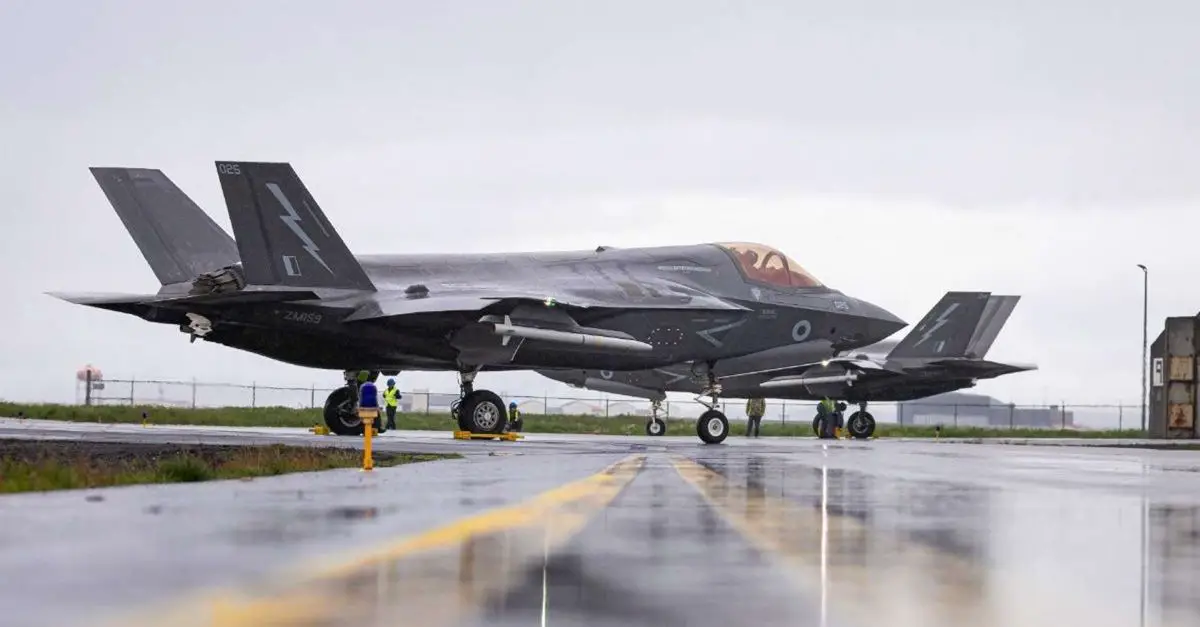Breaking News
United Kingdom Deploys F-35B Aircraft to Iceland for NATO Mission.
The British Royal Air Force has deployed F-35B Lightning aircraft to Iceland as part of a NATO air policing mission, marking the first time British F-35Bs have participated in such operations. These aircraft, from 617 Squadron, are tasked with defending NATO airspace in the Arctic region.
Follow Army Recognition on Google News at this link

The F-35B Lightning is a highly versatile multi-role combat aircraft. (Picture source: UK MoD)
NATO air policing is a permanent peacetime mission aimed at protecting the airspace of allied nations. This collective effort involves maintaining fighters and crews in a state of readiness to respond swiftly to potential airspace violations. This mission underscores the United Kingdom's unwavering commitment to NATO, reaffirmed by the Prime Minister at the recent Washington Summit, where he emphasized the importance of protecting the Alliance and addressing global threats.
Minister for the Armed Forces, Luke Pollard, stated: "The United Kingdom remains steadfast in its commitment to NATO. With the rise of global threats and increasing Russian aggression, it is crucial that we remain united with our allies. This air policing mission in Iceland illustrates the UK's ability to operate and deter adversaries across NATO airspace."
Following a successful mission in Romania, where six Typhoon jets and over 200 personnel were stationed to defend NATO's eastern border, the RAF is now focusing on Iceland. Four advanced F-35B aircraft from 617 Squadron have been deployed from RAF Marham to patrol Icelandic airspace. This is the first time British aircraft have conducted such operations in Iceland since 2019, when Typhoon jets carried out 59 training sorties and executed more than 180 practice intercepts.
The F-35B Lightning is a highly versatile multi-role combat aircraft, equipped with advanced sensors, mission systems, and stealth technology. Its low observability provides a significant tactical advantage, making it difficult for enemy radar systems to detect.
The F-35B is powered by a single Pratt & Whitney F135 turbofan engine, delivering 178 kN of thrust, enabling the aircraft to reach a maximum speed of 1,700 km/h, approximately Mach 1.6. Its compact design, with a wingspan of 10.40 meters and a length of 15.85 meters, along with a wing area of 42.7 square meters, makes it an agile and maneuverable aircraft capable of meeting the demands of complex missions. It can fly at a maximum altitude of 18,500 meters and has a combat radius of 869 km, making it suitable for medium-range operations.
The aircraft can carry up to 2,800 kg of armament in its internal bays, with the option to add an additional 6,800 kg on six external pylons. The internal armament includes a 25mm GAU-22 cannon, mounted in an external ventral pod on the F-35B, along with various precision-guided missiles and bombs.
In terms of avionics, the F-35B is equipped with the AN/APG-81 radar, an active electronically scanned array (AESA) radar that offers advanced detection capabilities, as well as the AN/AAQ-37 infrared sensor, which allows it to detect and track multiple threats at long range. With a G-load factor of up to +7 G, the F-35B is designed to withstand intense maneuvers while remaining reliable and performant.
Group Captain John Butcher, Commander of the Lightning Force, remarked: "This deployment marks the first time the Lightning Force has contributed to NATO air policing. It will undoubtedly demonstrate the flexibility of this platform and its capability to operate from both land and sea environments."
In addition to this deployment, RAF Typhoons and Voyagers continue to protect UK airspace through the Quick Reaction Alert Force, based at RAF Coningsby, Lossiemouth, and Brize Norton, ensuring continuous defense 24 hours a day, 365 days a year.


























